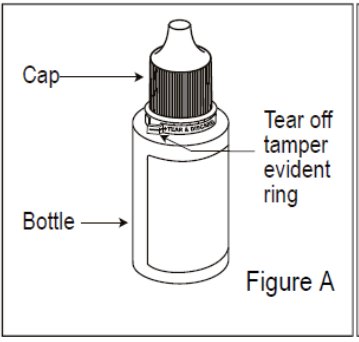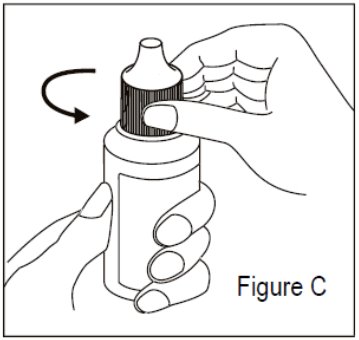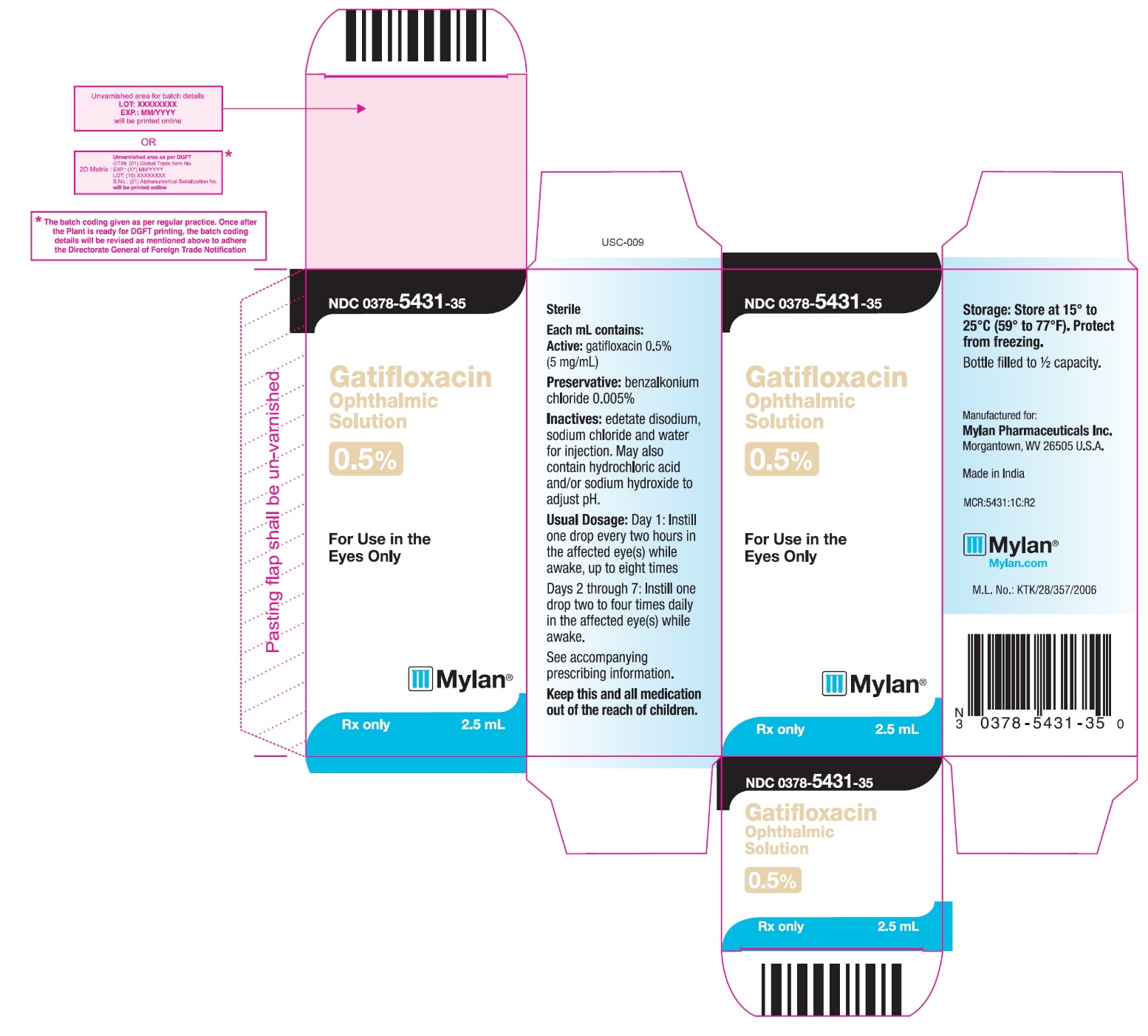GATIFLOXACIN- gatifloxacin solution/ drops
Mylan Pharmaceuticals Inc.
----------
HIGHLIGHTS OF PRESCRIBING INFORMATIONThese highlights do not include all the information needed to use GATIFLOXACIN OPHTHALMIC SOLUTION safely and effectively. See full prescribing information for GATIFLOXACIN OPHTHALMIC SOLUTION.
GATIFLOXACIN ophthalmic solution for topical ophthalmic use Initial U.S. Approval: 1999 RECENT MAJOR CHANGESINDICATIONS AND USAGEGatifloxacin ophthalmic solution is a quinolone antimicrobial indicated for the treatment of bacterial conjunctivitis caused by susceptible strains of the following organisms: Haemophilus influenzae, Staphylococcus aureus, Staphylococcus epidermidis, Streptococcus mitis group, Streptococcus oralis, Streptococcus pneumoniae (1) DOSAGE AND ADMINISTRATIONDay 1: Instill one drop every two hours in the affected eye(s) while awake, up to eight times on Day 1. Days 2 through 7: Instill one drop two to four times daily in the affected eye(s) while awake on Days 2 through 7. (2) DOSAGE FORMS AND STRENGTHSOphthalmic solution, 0.5% gatifloxacin (5 mg/mL) (3) CONTRAINDICATIONSGatifloxacin ophthalmic solution is contraindicated in patients with a history of hypersensitivity to gatifloxacin, to other quinolones, or to any of the components in this medication. (4) WARNINGS AND PRECAUTIONSADVERSE REACTIONSMost common adverse reactions occurring in ≥ 1% of patients included worsening of conjunctivitis, eye irritation, dysgeusia, and eye pain. (6) To report SUSPECTED ADVERSE REACTIONS, contact Mylan Pharmaceuticals Inc. at 1-877-446-3679 (1-877-4-INFO-RX) or FDA at 1-800-FDA-1088 or www.fda.gov/medwatch. See 17 for PATIENT COUNSELING INFORMATION. Revised: 10/2019 |
FULL PRESCRIBING INFORMATION
1 INDICATIONS AND USAGE
Gatifloxacin ophthalmic solution is indicated for the treatment of bacterial conjunctivitis caused by susceptible strains of the following organisms:
- •
- Aerobic gram-positive bacteria:
Staphylococcus aureus
Staphylococcus epidermidis
Streptococcus mitis group*
Streptococcus oralis*
Streptococcus pneumoniae - •
- Aerobic gram-negative bacteria:
Haemophilus influenzae
*Efficacy for these organisms were studied in fewer than ten infections.
2 DOSAGE AND ADMINISTRATION
- •
- Day 1: Instill one drop every two hours in the affected eye(s) while awake, up to eight times.
- •
- Day 2 through Day 7: Instill one drop two to four times daily in the affected eye(s) while awake.
4 CONTRAINDICATIONS
Gatifloxacin ophthalmic solution is contraindicated in patients with a history of hypersensitivity to gatifloxacin, to other quinolones, or to any of the components in this medication [see Warnings and Precautions (5.1)].
5 WARNINGS AND PRECAUTIONS
5.1 Hypersensitivity
Some patients receiving topical ophthalmic gatifloxacin experienced hypersensitivity reactions including anaphylactic reactions, angioedema (including pharyngeal, laryngeal, or facial edema), dyspnea, urticaria, and itching, even following a single dose. Rare cases of Stevens-Johnson Syndrome were reported in association with topical ophthalmic gatifloxacin use. If an allergic reaction to gatifloxacin occurs, discontinue the drug [see Patient Counseling Information (17)].
5.2 Growth of Resistant Organisms with Prolonged Use
Prolonged use of gatifloxacin ophthalmic solution may result in overgrowth of nonsusceptible organisms, including fungi. If superinfection occurs, discontinue use and institute alternative therapy. Whenever clinical judgment dictates, examine the patient with the aid of magnification, such as slit lamp biomicroscopy and where appropriate, fluorescein staining.
6 ADVERSE REACTIONS
The following serious adverse reactions are described elsewhere in the labeling:
- •
- Hypersensitivity [see Contraindications (4) and Warnings and Precautions (5.1)]
- •
- Growth of Resistant Organisms with Prolonged Use [see Warnings and Precautions (5.2)]
- •
- Corneal Endothelial Cell Injury [see Warnings and Precautions (5.3)]
6.1 Clinical Studies Experience
Because clinical studies are conducted under widely varying conditions, adverse reaction rates observed in the clinical studies of a drug cannot be directly compared to rates in the clinical studies of another drug and may not reflect the rates observed in practice.
In clinical studies of patients with bacterial conjunctivitis treated with gatifloxacin ophthalmic solution (N = 717), the most frequently reported adverse reactions occurring in ≥ 1% of patients were: worsening of the conjunctivitis, eye irritation, dysgeusia, and eye pain.
Additional adverse reactions reported with other formulations of gatifloxacin ophthalmic solution in other clinical studies included chemosis, conjunctival hemorrhage, dry eye, eye discharge, eyelid edema, headache, increased lacrimation, keratitis, red eye, papillary conjunctivitis, and reduced visual acuity.
6.2 Postmarketing Experience
The following adverse reactions have been identified during post-approval use of gatifloxacin ophthalmic solution, 0.5% or with other formulations of gatifloxacin ophthalmic solution. Because these reactions are reported voluntarily from a population of uncertain size, it is not always possible to reliably estimate their frequency or establish a causal relationship to drug exposure. These reactions included anaphylactic reactions and angioedema (including pharyngeal, oral or facial edema), blepharitis, dyspnea, eye pruritus, eye swelling (including corneal and conjunctival edema), hypersensitivity, including signs and symptoms of eye allergy and allergic dermatitis, nausea, pruritus (including pruritus generalized, rash, urticaria), and vision blurred.
8 USE IN SPECIFIC POPULATIONS
8.1 Pregnancy
Risk Summary
There are no available data on the use of gatifloxacin ophthalmic solution in pregnant women to inform a drug-associated risk. Administration of oral gatifloxacin to pregnant rats and rabbits throughout organogenesis did not produce adverse development outcomes at clinically relevant doses. Administration of gatifloxacin to rats during late gestation through lactation did not produce adverse maternal, fetal or neonatal effects at clinically relevant doses.
Data
Animal Data
Oral administration of gatifloxacin to pregnant rats throughout organogenesis produced teratogenic effects in rat fetuses, including skeletal/craniofacial malformations, delayed ossification, atrial enlargement, and reduced fetal weight, at doses greater than or equal to 150 mg/kg/day (approximately 600-fold higher than the maximum recommended human ophthalmic dose [MRHOD] for gatifloxacin ophthalmic solution of 0.04 mg/kg/day, on a mg/m2 basis). No teratogenic effects were observed in rat or rabbit fetuses at doses of gatifloxacin up to 50 mg/kg/day (approximately 200- and 400-fold higher than the MRHOD, respectively, on a mg/m2 basis).
In a perinatal/postnatal study in rats, oral administration of gatifloxacin during late gestation through lactation produced an increase in late gestation fetal loss and neonatal/perinatal mortality at 200 mg/kg/day (approximately 800-fold higher than the MRHOD on a mg/m2 basis).
8.2 Lactation
Risk Summary
There is no information regarding the presence of gatifloxacin in human milk, the effect of gatifloxacin on breastfed infants, or the effect of gatifloxacin on milk production. Gatifloxacin was found in the breast milk of rats following oral administration of gatifloxacin during lactation. However, systemic levels of gatifloxacin following topical ocular administration are low [see Clinical Pharmacology (12.3)], and it is not known whether gatifloxacin would be present in maternal milk at measurable levels following topical ocular administration. The developmental and health benefits of breastfeeding should be considered along with the mother’s clinical need for gatifloxacin ophthalmic solution and any potential adverse effects on the breastfed child from gatifloxacin ophthalmic solution.
8.4 Pediatric Use
The safety and effectiveness of gatifloxacin ophthalmic solution in infants below one year of age have not been established. Gatifloxacin ophthalmic solution has been demonstrated in clinical trials to be safe and effective for the treatment of bacterial conjunctivitis in pediatric patients one year or older [see Clinical Studies (14)].
11 DESCRIPTION
Gatifloxacin is a quinolone antimicrobial ophthalmic solution for the treatment of bacterial conjunctivitis. Its chemical name is (±)-1-Cyclopropyl-6-fluoro-8-methoxy-7-(3-methyl)-1-piperazinyl-4-oxo-1,4-dihydroquinoline-3-carboxylic acid, hemihydrate. Its molecular formula is C19H22FN3O4•½ H2O, and its molecular weight is 384. Its chemical structure is:
Gatifloxacin ophthalmic solution is a clear, pale yellow, sterile, preserved aqueous solution with an osmolality of 260 to 330 mOsm/kg and a pH of 5.1 to 5.7.
Gatifloxacin ophthalmic solution contains the active ingredient gatifloxacin 0.5% (5 mg/mL) and the inactive ingredients benzalkonium chloride 0.005%, edetate disodium, sodium chloride and water for injection. Gatifloxacin ophthalmic solution may contain hydrochloric acid and/or sodium hydroxide to adjust pH.
12 CLINICAL PHARMACOLOGY
12.3 Pharmacokinetics
Gatifloxacin ophthalmic solution 0.5% was administered to one eye of six healthy male subjects each in an escalated dosing regimen starting with a single two drop dose, then two drops four times daily for seven days, and finally two drops eight times daily for three days. At all time points, serum gatifloxacin levels were below the lower limit of quantification (5 ng/mL) in all subjects.
12.4 Microbiology
Gatifloxacin is an 8-methoxyfluoroquinolone with a 3-methylpiperazinyl substituent at C7. The antibacterial action of gatifloxacin results from inhibition of DNA gyrase and topoisomerase IV. DNA gyrase is an essential enzyme that is involved in the replication, transcription, and repair of bacterial DNA. Topoisomerase IV is an enzyme known to play a key role in the partitioning of the chromosomal DNA during bacterial cell division. The mechanism of action of fluoroquinolones including gatifloxacin is different from that of aminoglycoside, macrolide, and tetracycline antibiotics. Therefore, gatifloxacin may be active against pathogens that are resistant to these antibiotics and these antibiotics may be active against pathogens that are resistant to gatifloxacin. There is no cross-resistance between gatifloxacin and the aforementioned classes of antibiotics. Cross-resistance has been observed between systemic gatifloxacin and some other fluoroquinolones.
Resistance to gatifloxacin in vitro develops via multiple-step mutations. Resistance to gatifloxacin in vitro occurs at a general frequency of 1 x 10-7 to 10-10.
Gatifloxacin has been shown to be active against most isolates of the following organisms both microbiologically and clinically, in conjunctival infections:
- •
- Aerobic gram-positive bacteria:
Staphylococcus aureus
Staphylococcus epidermidis
Streptococcus mitis group*
Streptococcus oralis*
Streptococcus pneumoniae - •
- Aerobic gram-negative bacteria:
Haemophilus influenzae
*Efficacy for these organisms were studied in fewer than ten infections.
13 NONCLINICAL TOXICOLOGY
13.1 Carcinogenesis, Mutagenesis, Impairment of Fertility
Carcinogenesis
There was no increase in neoplasms among B6C3F1 mice given gatifloxacin in the diet for 18 months at doses averaging 81 mg/kg/day in males and 90 mg/kg/day in females. These doses are approximately 175-fold higher than the maximum recommended ophthalmic dose (MRHOD) of 0.04 mg/kg/day gatifloxacin ophthalmic solution in a 60 kg human (on a mg/m2 basis).
A statistically significant increase in the incidence of large granular lymphocyte (LGL) leukemia was seen in male rats treated with 100 mg/kg/day (approximately 405-fold higher than the MRHOD, on a mg/m2 basis). Fischer 344 rats have a high spontaneous background rate of LGL leukemia and the incidence in high-dose males only slightly exceeded the historical control range established for this strain. There was no increase in neoplasms among Fischer 344 rats given gatifloxacin in the diet for two years at doses averaging 47 mg/kg/day in males and 139 mg/kg/day in females (approximately 190- and 560-fold higher than the MRHOD, respectively), on a mg/m2 basis.
Mutagenesis
In genetic toxicity tests, gatifloxacin was positive in one of five strains used in bacterial reverse mutation assays: Salmonella strain TA102. Gatifloxacin was positive in in vitro mammalian cell mutation and chromosome aberration assays. Gatifloxacin was positive in in vitro unscheduled DNA synthesis in rat hepatocytes but not human leukocytes. Gatifloxacin was negative in in vivo micronucleus tests in mice, cytogenetics test in rats, and DNA repair test in rats. The genotoxic findings are similar to findings obtained with other quinolones and may be due to the pharmacologic inhibitory effects of high concentrations of gatifloxacin on eukaryotic type II DNA topoisomerase.
14 CLINICAL STUDIES
In two randomized, double-masked, multicenter clinical trials, where patients 1 to 89 years of age were dosed for five days, gatifloxacin ophthalmic solution was clinically superior to its vehicle on day 6 in patients with conjunctivitis and positive conjunctival cultures. Clinical outcomes for the trials demonstrated clinical success (resolution of conjunctival hyperemia and conjunctival discharge) in 58% (193/333) of patients for the gatifloxacin-treated groups vs. 45% (148/325) for the vehicle-treated groups. Microbiological outcomes for the same clinical trials demonstrated a statistically superior eradication rate for causative pathogens of 90% (301/333) for gatifloxacin vs. 70% (228/325) for vehicle. Please note that microbiological eradication does not always correlate with clinical outcome in anti-infective trials.
16 HOW SUPPLIED/STORAGE AND HANDLING
Gatifloxacin Ophthalmic Solution is a sterile, clear, pale yellow solution practically free from particles of 0.5% gatifloxacin. Each mL of Gatifloxacin Ophthalmic Solution, 0.5% contains 5.120 mg gatifloxacin hemihydrate equivalent to 5 mg (0.5%) gatifloxacin.
Gatifloxacin Ophthalmic Solution, 0.5% is supplied as a 2.5 mL solution in a 5 mL three piece container consisting of a white low density polyethylene bottle, a white low density polyethylene open nozzle and a tan high density polyethylene cap.
2.5 mL fill
NDC 0378-5431-35
carton of one bottle
Storage: Store at 15° to 25°C (59° to 77°F). Protect from freezing.
17 PATIENT COUNSELING INFORMATION
Avoiding Contamination of the Product: Instruct patients to avoid contaminating the applicator tip with material from the eye, fingers, or other source.
Potential for Hypersensitivity Reactions: Advise patients to discontinue use immediately and contact the physician at the first sign of a rash or hypersensitivity reaction [see Warnings and Precautions (5.1) and Contraindications (4)].
Instructions for Use
gatifloxacin
ophthalmic solution 0.5% for topical ophthalmic use
Read this Instructions for Use before you start using gatifloxacin ophthalmic solution and each time you get a refill. There may be new information. This leaflet does not take the place of talking to your healthcare provider about your medical condition or treatment.
Important information about gatifloxacin ophthalmic solution:
- •
- Do not let the gatifloxacin ophthalmic solution applicator tip touch your eye, fingers, or other surfaces.
- •
- Stop using gatifloxacin ophthalmic solution and call your healthcare provider right away if you get any signs or symptoms of an allergic reaction including:
|
|
Before you use gatifloxacin ophthalmic solution for the first time:
- 1.
- Check to make sure that the tamper evident ring between the bottle and the cap is not broken (See Figure A). If the tamper evident ring is broken or missing, contact your pharmacist.
- 1.
- Tear off the tamper evident ring (See Figure B).
- 1.
- To open the bottle, remove the cap by turning it in the counterclockwise direction (See Figure C).
How should I store gatifloxacin ophthalmic solution?
- •
- Store gatifloxacin ophthalmic solution at room temperature between 59°F to 77°F (15°C to 25°C).
- •
- Do not freeze.
This Instructions for Use has been approved by the U.S. Food and Drug Administration.
Manufactured for:
- Mylan Pharmaceuticals Inc.
- Morgantown, WV 26505 U.S.A.
Manufactured by:
Micro Labs Limited
Bangalore – 560 099, INDIA
M.L. No.: KTK/28/357/2006
Revised: 8/2017
MCR:GATIOP:R3
PRINCIPAL DISPLAY PANEL – 0.5%
NDC 0378-5431-35
Gatifloxacin
Ophthalmic
Solution
0.5%
For Use in the
Eyes Only
Rx only 2.5 mL
Sterile
Each mL contains:
Active: gatifloxacin 0.5%
(5 mg/mL)
Preservative: benzalkonium
chloride 0.005%
Inactives: edetate disodium,
sodium chloride and water
for injection. May also
contain hydrochloric acid
and/or sodium hydroxide to
adjust pH.
Usual Dosage: Day 1: Instill
one drop every two hours in the
affected eye(s) while awake,
up to eight times
Days 2 through 7: Instill one
drop two to four times daily
in the affected eye(s) while
awake.
See accompanying
prescribing information.
Keep this and all medication
out of the reach of children.
Storage: Store at 15° to
25°C (59° to 77°F). Protect
from freezing.
Bottle filled to ½ capacity.
Manufactured for:
Mylan Pharmaceuticals Inc.
Morgantown, WV 26505 U.S.A.
Made in India
MCR:5431:1C:R2
Mylan.com
M.L. No.: KTK/28/357/2006
| GATIFLOXACIN
gatifloxacin solution/ drops |
||||||||||||||||||||
|
||||||||||||||||||||
|
||||||||||||||||||||
|
||||||||||||||||||||
|
||||||||||||||||||||
|
||||||||||||||||||||
|
||||||||||||||||||||
| Labeler - Mylan Pharmaceuticals Inc. (059295980) |




